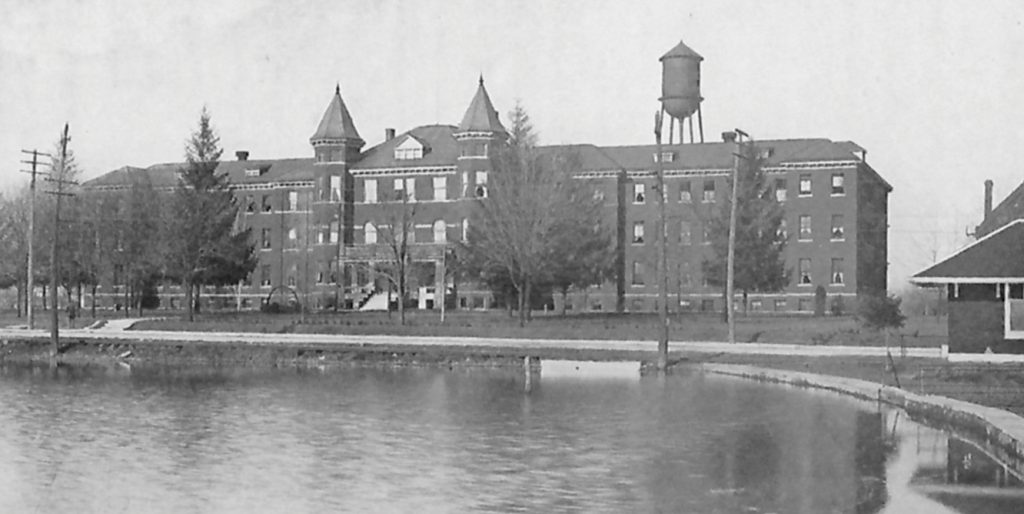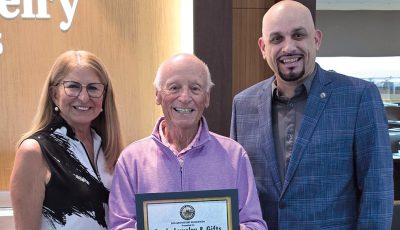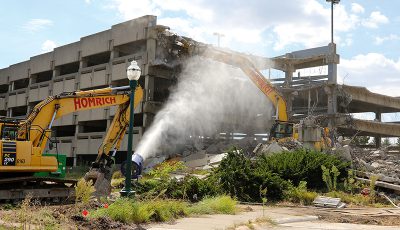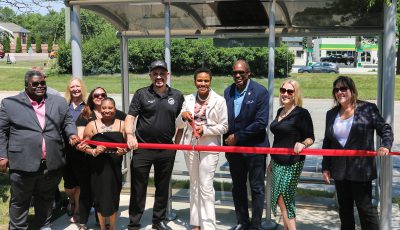The history of Eloise continued (part 4)
 This is part four of a multi-part complete history of the Wayne County Poorhouse and Asylum, commonly known as Eloise. As we go towards the turn of the century Eloise starts to grow into more and more of its own city. In 1893 “Lake Eloise” was dug on the south side of Michigan Avenue between the road and the railroad tracks. This lake is still there if you catch a glimpse between the trees that have grown up around it. It was used to house drinking water for the County House as they had a hard time up until then to keep a steady water supply. Wells on site regularly ran dry, as did the Rouge at the time, so they dug a well over 200 feet deep and pumped the water into this “Lake”. It had a double advantage as in the winter they could cut the ice from the lake and store it in their ice houses to use for refrigeration. In 1895 they built a large industrial laundry to wash the facility’s clothing and bedding.
This is part four of a multi-part complete history of the Wayne County Poorhouse and Asylum, commonly known as Eloise. As we go towards the turn of the century Eloise starts to grow into more and more of its own city. In 1893 “Lake Eloise” was dug on the south side of Michigan Avenue between the road and the railroad tracks. This lake is still there if you catch a glimpse between the trees that have grown up around it. It was used to house drinking water for the County House as they had a hard time up until then to keep a steady water supply. Wells on site regularly ran dry, as did the Rouge at the time, so they dug a well over 200 feet deep and pumped the water into this “Lake”. It had a double advantage as in the winter they could cut the ice from the lake and store it in their ice houses to use for refrigeration. In 1895 they built a large industrial laundry to wash the facility’s clothing and bedding.

“Lake Eloise” and the remodeled Asylum
By 1896 the chief bookkeeper Stanislas Keenan began tinkering and experimenting with electrical equipment and built a prototype X-Ray Machine. He had been reading books about early experiments in Germany and made a machine that filled 3 rooms, but it worked, and you could see inside the human body for the first time. The X-Ray machine at Eloise is arguably the first one in the US and it was instantly a godsend, with doctors in Detroit sending patients to Eloise to diagnose fractures. Many of the early tubes from this machine are at the Detroit Historical Museum.
In 1899 the old asylum building was remodeled, several barns built or improved, and in 1905 an industrial bakery was built to make bread for the growing community. In 1903 there was a major tuberculosis outbreak in Detroit and tents were erected on the County House lawns to treat TB patients. In 1909 the tents were replaced with wooden shacks, which were used until tuberculosis subsided in the 1920s. It was believed at the time that open air treatments and breathing fresh cold air was good for the patient, but most who ended up at Eloise were the poor and those in the advanced stages of the disease.
Eloise also had a pesthouse, which is an isolation house for those with smallpox. It is said it was only used two or three times, as smallpox wasn’t a serious concern around here. Around 1910 doctors at Eloise began using radium to treat skin cancer and tumors, a technique pioneered there and still in use today. There was talk of establishing a cancer hospital on site but plans never materialized.
During this time Eloise had its own Railroad and Streetcar stops, water, sewer and power supplies, bakery, laundry, post office, store, farm and police and fire departments. It truly was a self-sufficient city. Follow along next month as we go into the 20s.










